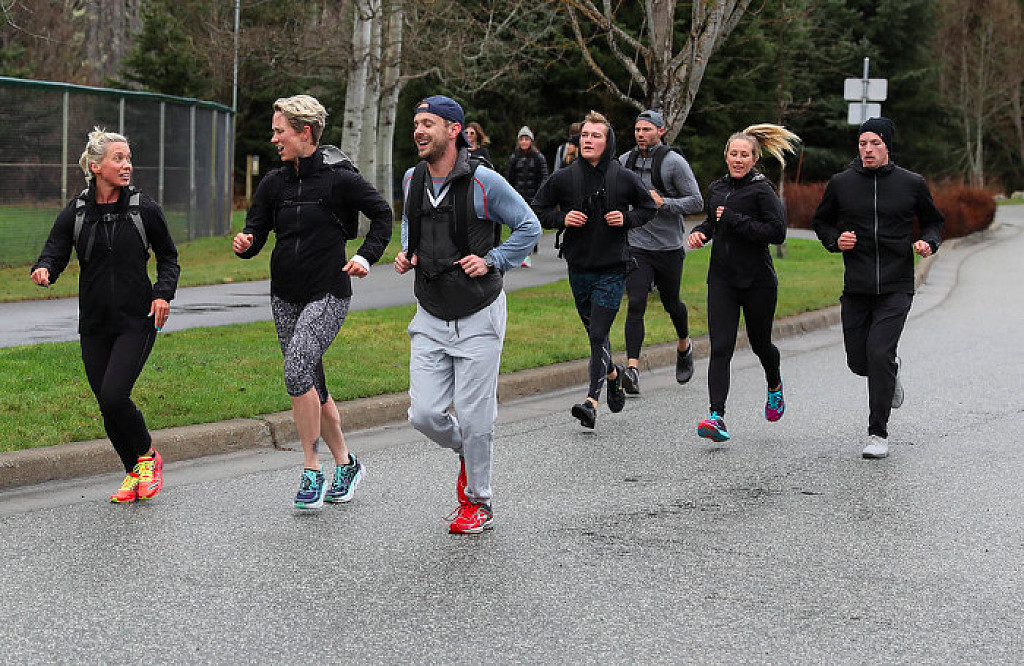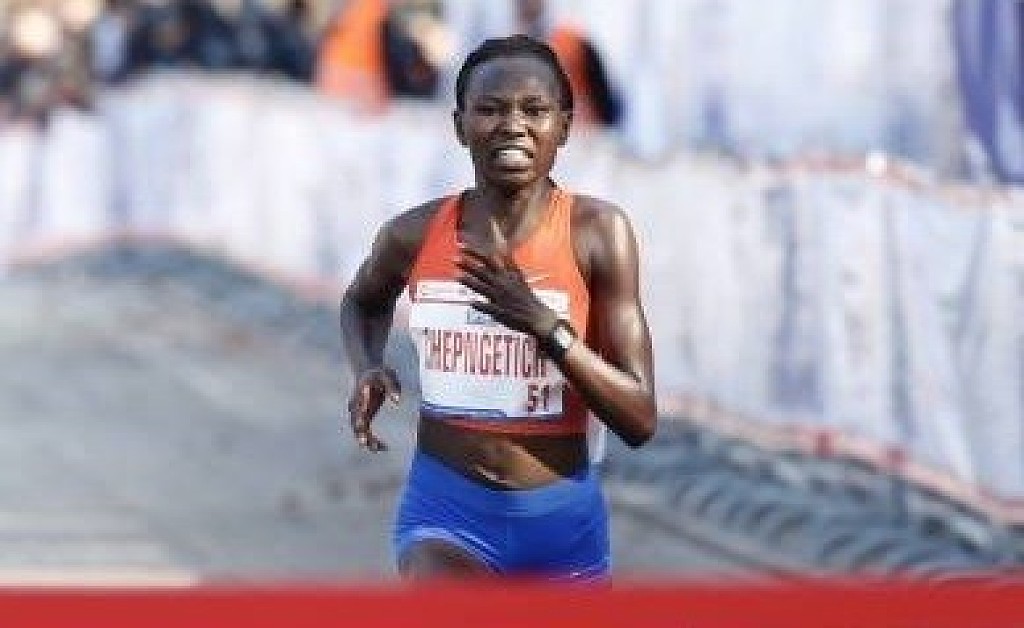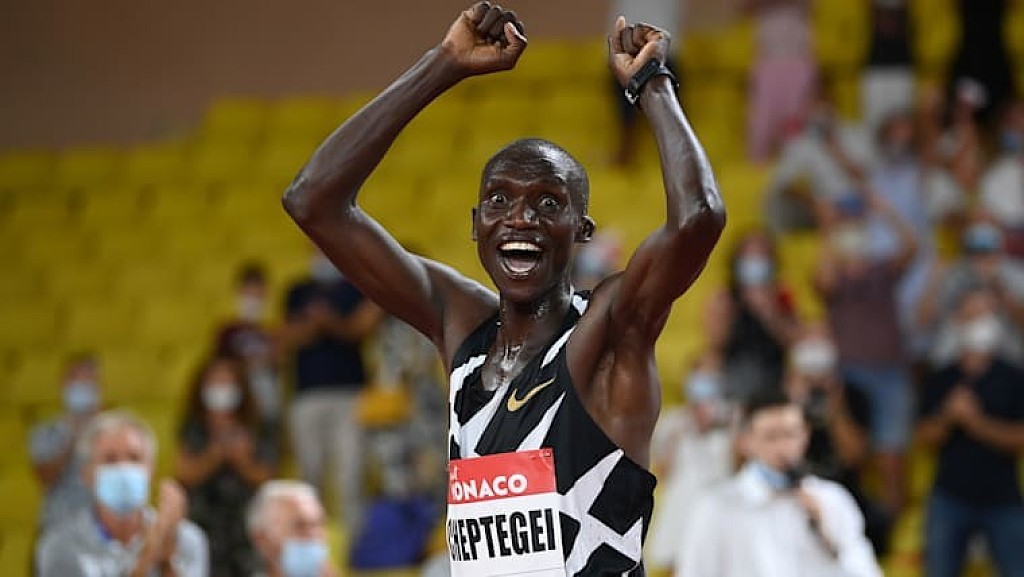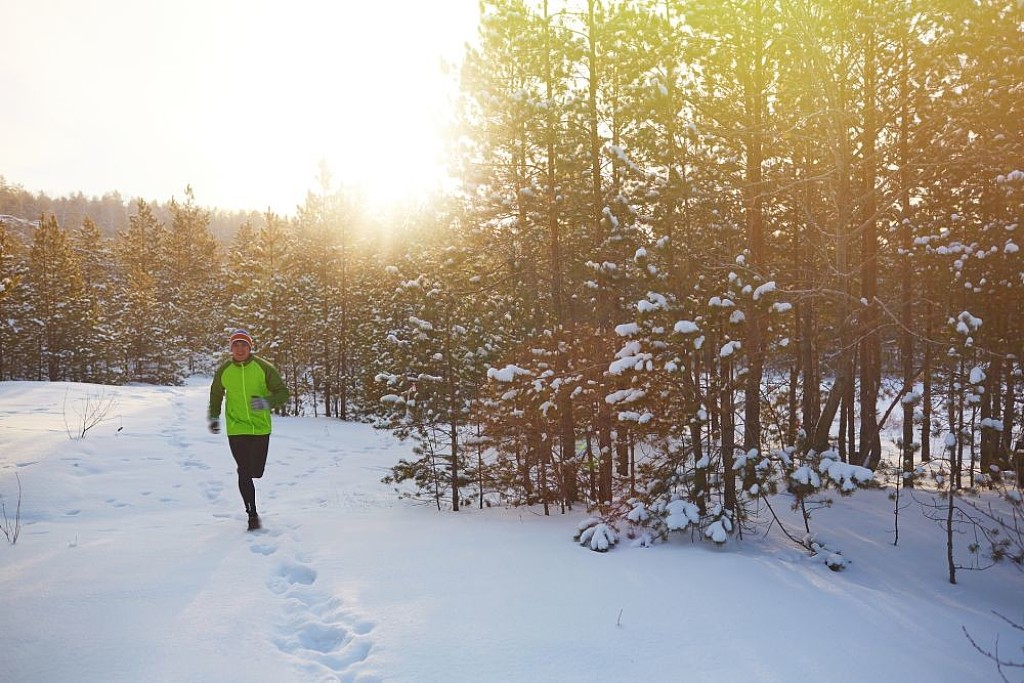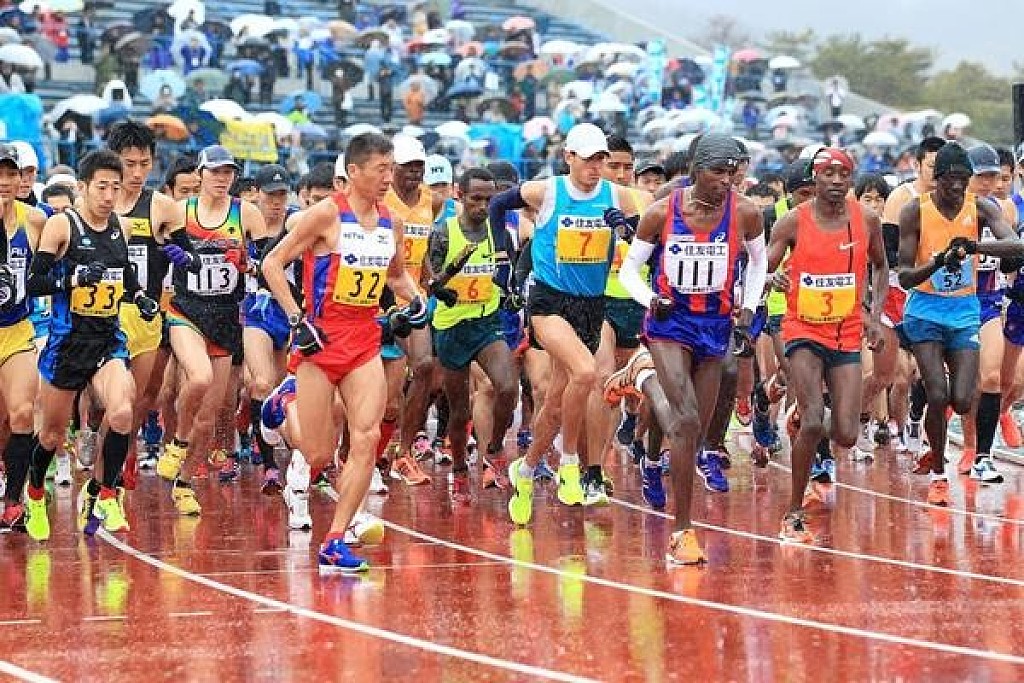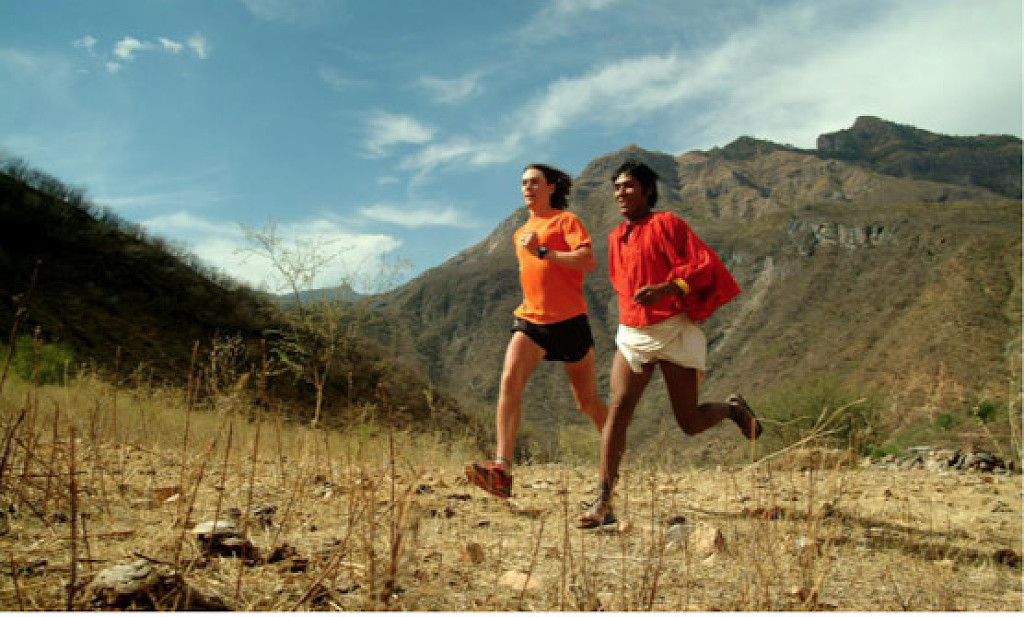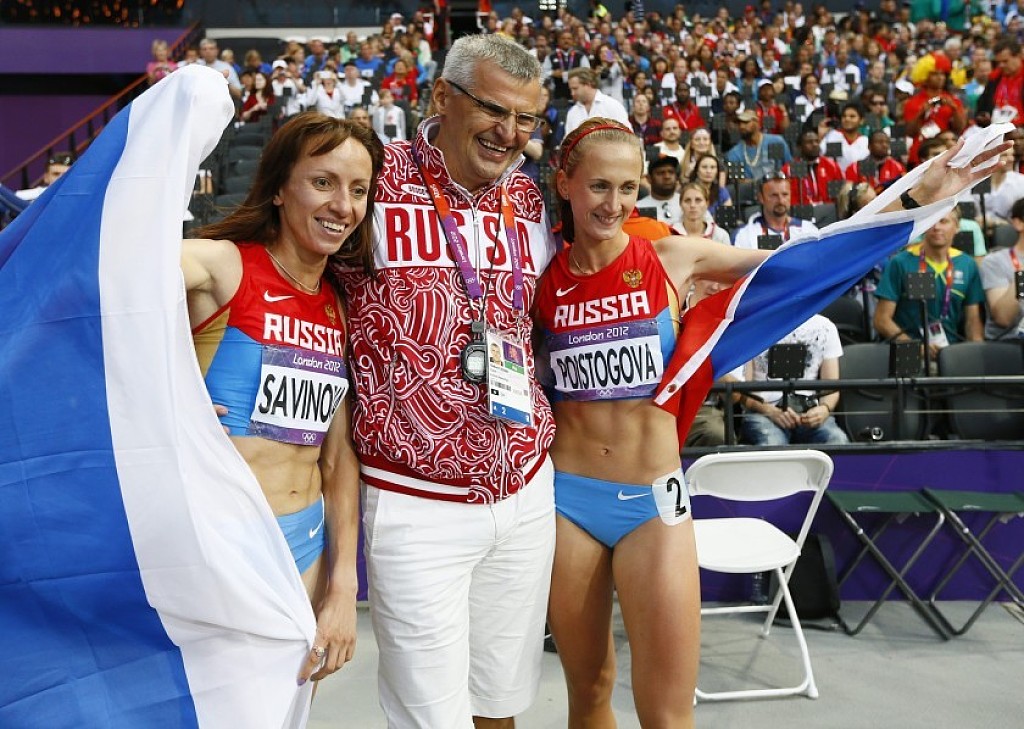Running News Daily
Top Ten Stories of the Week
1/2/2021
These are the top ten stories based on views over the last week.
How to find a running routine, and stick to it?
So. Much. Running. At least that’s how it feels during those first few runs, when you decide that running is going to be your new fitness routine.
But after a few running workouts, the body starts to adjust and you get your stride back. There are some people who just take naturally to running. They enjoy going out for a few miles either before or after a workout at the gym. And then there’s the rest of us, dreading every step and laboring from start to finish. BUT, there is hope! Check out these easy habits that motivate you to stat, or keep, running.
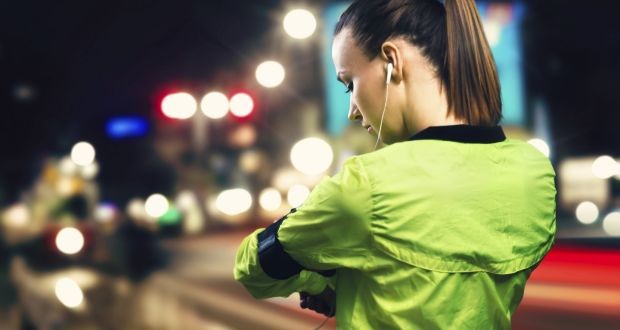
Find a buddy. Partnering up with someone will help hold you accountable instead of flaking out last minute. Running with a partner will also help you with pacing so you can finish out the mileage you intended to do. For extra motivation, try a local run club.
Make it a routine. Commit to picking a day and time to run. For example, make every Sunday an active recovery day and go for a run or hit some 400m repeats at the track. In just a few short weeks the run will feel easier.
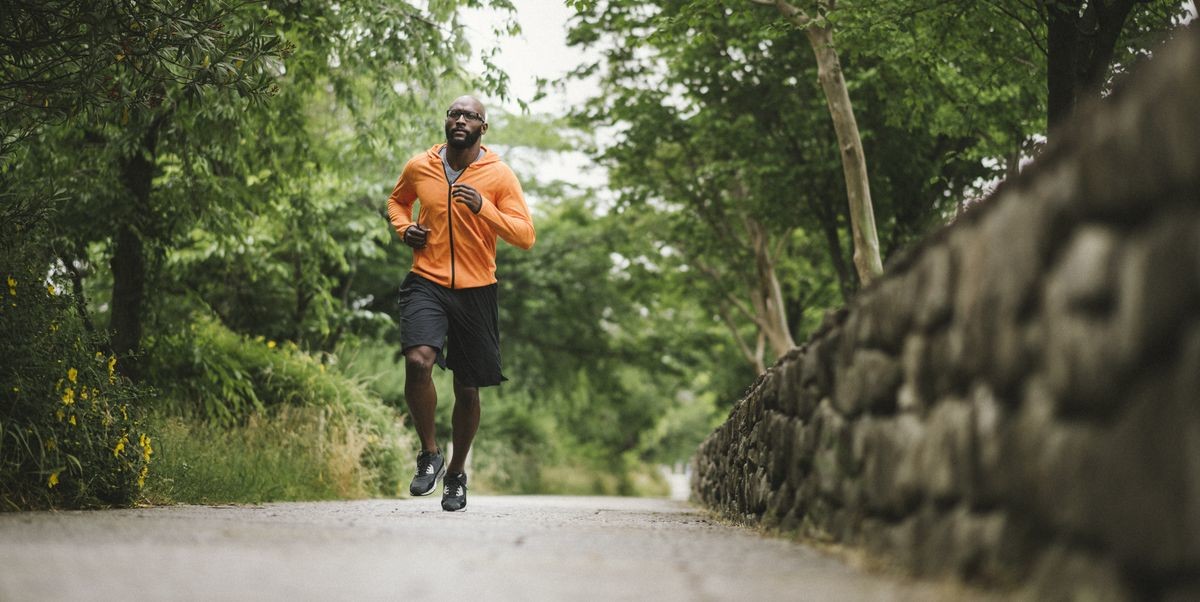
Be realistic. First day 10k let’s establish my time! Wrong. Try a mile. In a few weeks try two. Training is a marathon, not a sprint (no pun intended).
Keep it fresh. You don’t have to do the same boring mile every week. Switch up the scenery, the mileage, the rest time, etc. This will prevent you from hitting a plateau and also keep your interest peaked.
Set a goal. Whether you have a 5k time you want to build up to or a specific race in mind, set a goal. Having your eyes on the finish line will help you stay consistent in your training.
The repetitive motion of running is what draws us both to and from becoming a better runner. So before you write it off completely or become complacent in your training pace, try to develop some of these habits. Athletes with motivated habits see the most success in their training.
(12/31/20) Views: 92Jessica Murden
For runners, 2020 was a year of noes, no races, no group runs, that is the reason why runners are looking forward to 2021
For runners, 2020 was a year of noes. No races, no group runs and, at least for a while, no (or very little) fun.
We eventually figured out how to have fun while keeping safe, which is one of the reasons next year looks like it has the potential to be better than 2020. Although the pandemic won’t magically end when we ring in the new year, the are several reasons runners should look forward to 2021, which could be a year of yeses.
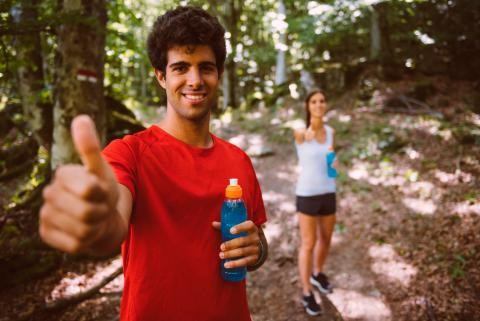
Back to races:
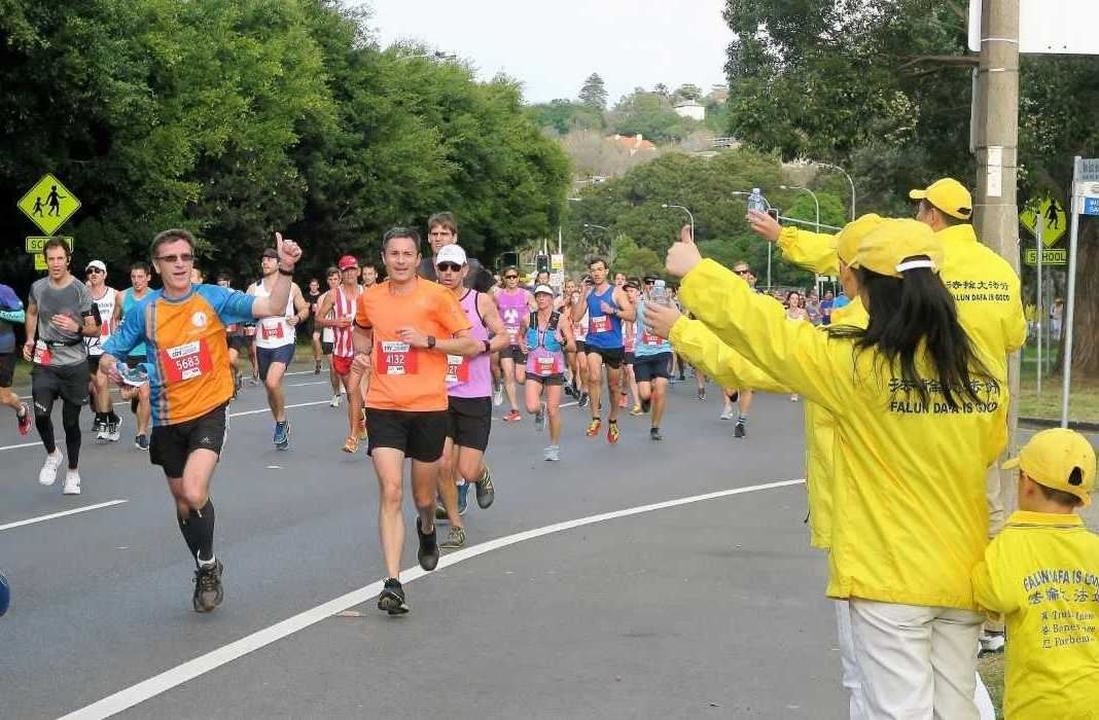
It doesn’t look like mass participation races with thousands and thousands of runners will make a comeback in 2021, but that doesn’t mean smaller events won’t be held. As the pandemic wore on throughout the year, race organizers and event teams came up with plans for COVID-friendly runs. These organizing teams have worked closely with local and provincial health officials to create safe race formats, and that planning won’t stop throughout the winter.
Come spring, there could be a good number of race opportunities for runners across Canada, and while you shouldn’t expect to run alongside 10,000 of your closest running buddies, you might get the chance to run in a real race in 2021, which is definitely a reason to get excited.
The fall marathon schedule:
With the postponements of the Tokyo, Boston and London marathons, all six World Marathon Majors (WMMs) are set to be run in the fall of 2021. The mass participation events at these races might not be able to go ahead as planned, but after the success of the London Marathon’s elite-only event this year, there’s a good chance that the other five WMMs will follow suit and host elite fields next year.
This packed fall schedule will make for an exciting few weeks of races for running fans to watch, which will be a welcome change following 2020, a year in which we only saw a few elite marathons.
One of the biggest dissapointments for athletes in 2020 was the cancellation of the Tokyo Olympics. As we learned this year, nothing can be considered a sure thing in the age of COVID-19.
But International Olympic Committee officials have expressed their confidence that the Games will go ahead next summer. At the moment, the Games appear to be a go, and that is a big reason to look forward to 2021.
When COVID-19 first hit, we were thrown into the world of no races with pretty much no warning. Now, after months of living through a pandemic, we know how to keep ourselves busy when we can’t race. We’re confident that race organizers will be able to get their events up and ready to go with proper COVID-19 guidelines in place next year, but now we’ve all gotten creative and figured out how to come up with different running challenges. Whether you’re into time trials, ultra challenges or any other kind of personal competition, you’re set for an entertaining 2021.
Virtual challenges and events:
This is the same deal as the last reason to look forward to 2021. When the pandemic first started, race organizing teams were caught off-guard and left without many options for their events. Many races transitioned to virtual formats, but some cancelled everything for 2020. In addition to planning COVID-friendly in-person races for next year, a lot of these organizing teams have virtual events and challenges ready for 2021, which means we’ll all have so many options to keep ourselves busy, no matter how the global health situation looks.
(12/28/20) Views: 70Ben Snider-McGrath
World marathon champion Ruth Chepng’etich hopes to end a coronavirus ravaged season lining up for the San Silvestre Vallecana
World marathon champion Ruth Chepng’etich hopes to end a coronavirus ravaged season on a high on the last day of the year when she lines up for the San Silvestre Vallecana 10-kilometer road Thursday night.
Chepng’etich will be up against Ethiopia’s World Half Marathon bronze medalist Yalemzerf Yehualaw among other invited athletes.
The two last met in October during the New Delhi Half Marathon where Yalemzerf bagged victory in one hour, four minutes and 46 seconds with Chepng’etich second in 1:05.06 and Ethiopia’s Ababel Yeshaneh third in 1:05.21.
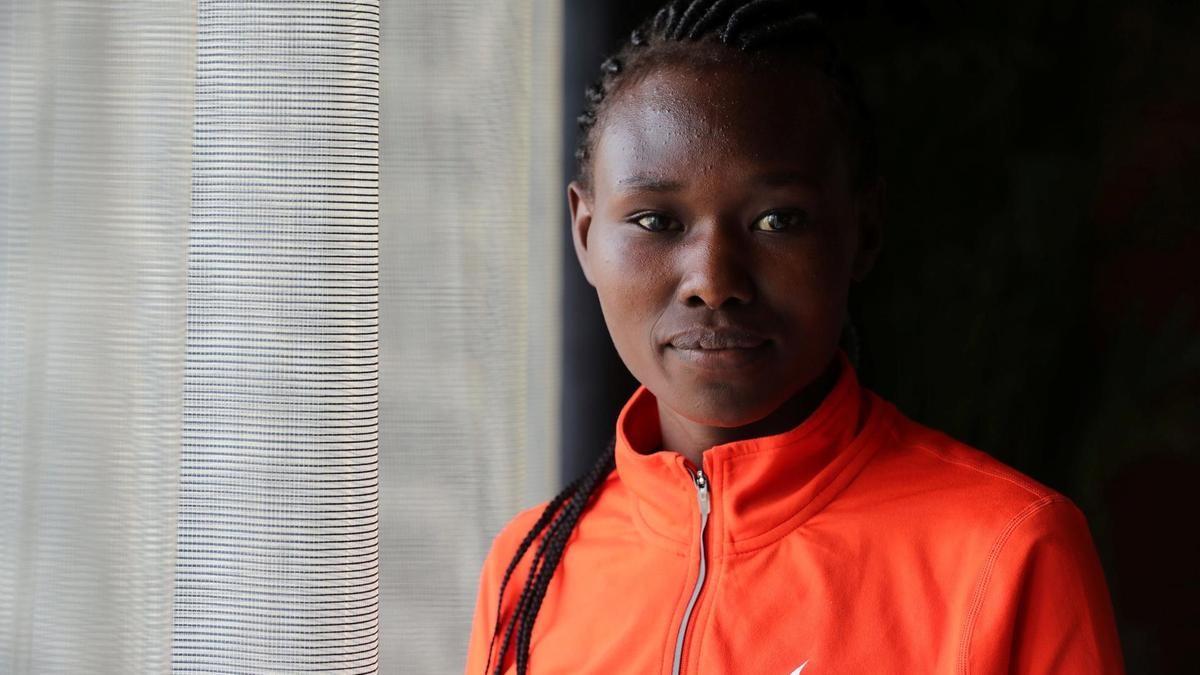
The coronavirus pandemic has changed the way races are organized and today’s race in the Spanish city is no exception.
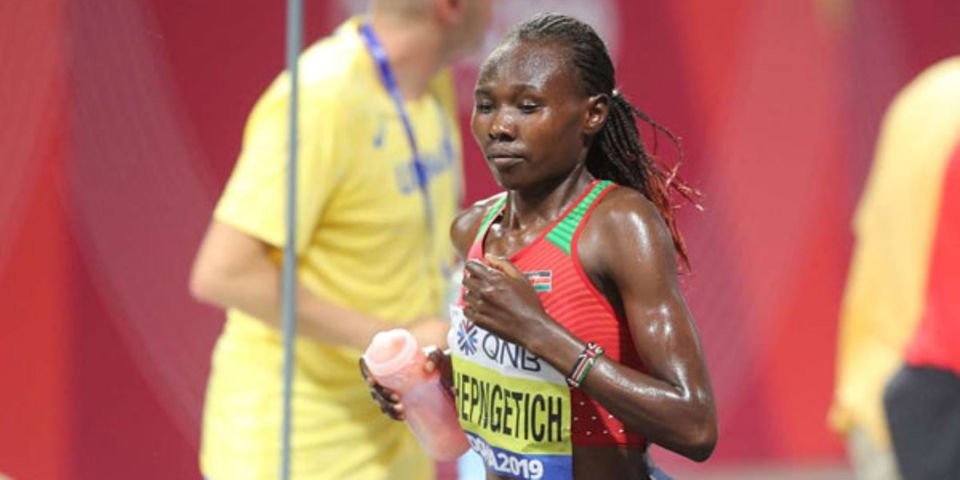
Elite athletes are the only ones who will compete with this years’ race on a 2.5-kilometer loop “bubble” at Ensanche de Vallecas, as one way of protecting the athletes with the possibility of mingling with the public.
Olympic dream
The women’s race will start at 8.30pm Kenyan time with the men’s race going off one hour later with Chepng’etich seeking to wrestle the title currently held by Ethiopia after Hellen Bekele Tola won the race last year.
“It has been a difficult year for athletes but I’m happy because this is my third race and I will be running my own race. I have prepared well and I will be expecting a good competition eyeing a place in the podium,” said Chepng’etich.
“It’s my dream to compete in the Olympic Games and I have to start preparing early. I’m just using these races for speed work as we wait for next year which we hope things will ease off.”
In Italy, five Kenyan women will line up for Boclassic 10-kilometre road race with a different course expected to be used due to Covid-19 restrictions. World 5,000 metres silver medalist Margaret Chelimo leads compatriots who include Janet Kisa, Norah Tanui, Dorcas Tuitoek and Gloria Kite in the city of Bolozano.
(12/31/20) Views: 69Bernard Rotich
Ugandan Joshua Cheptegei has said his focus is on becoming just the eighth man to successfully complete the 5,000m-10,000m double at an Olympic Games
The Ugandan, 24, set world records over both distances last year, adding to the 5,000m world gold he won at Doha 2019.
"It would be a mountain to climb, but the challenge is up to me," he told BBC World Service Sport.
"It is demanding a lot, in terms of racing and mindset but I want to give myself a try to win both gold medals."
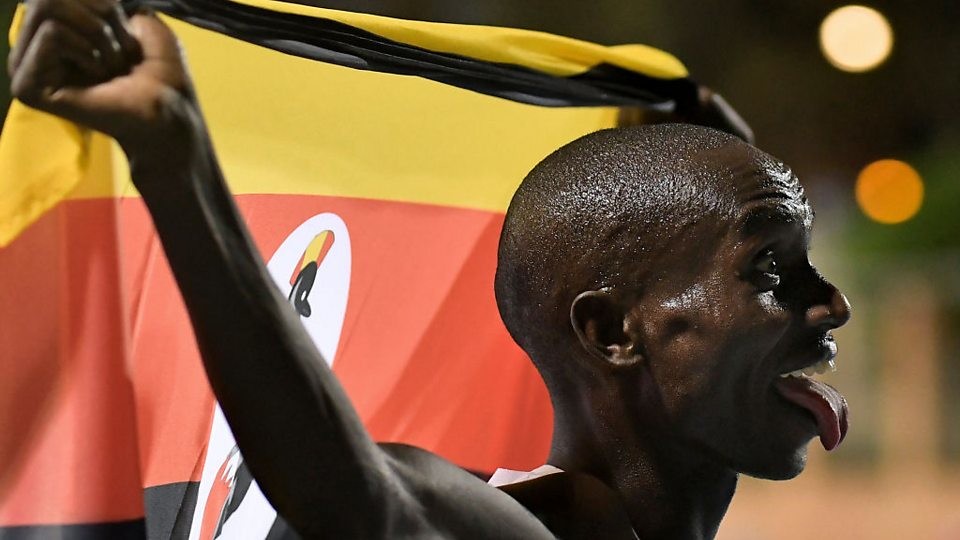
Seven men have won both 5,000m and 10,000m golds at the same Olympics, with Britain's Mo Farah doing the double at both London 2012 and Rio 2016.
As a teenager, Cheptegei finished eighth and sixth in the 5,000m and 10,000m finals respectively in Rio.
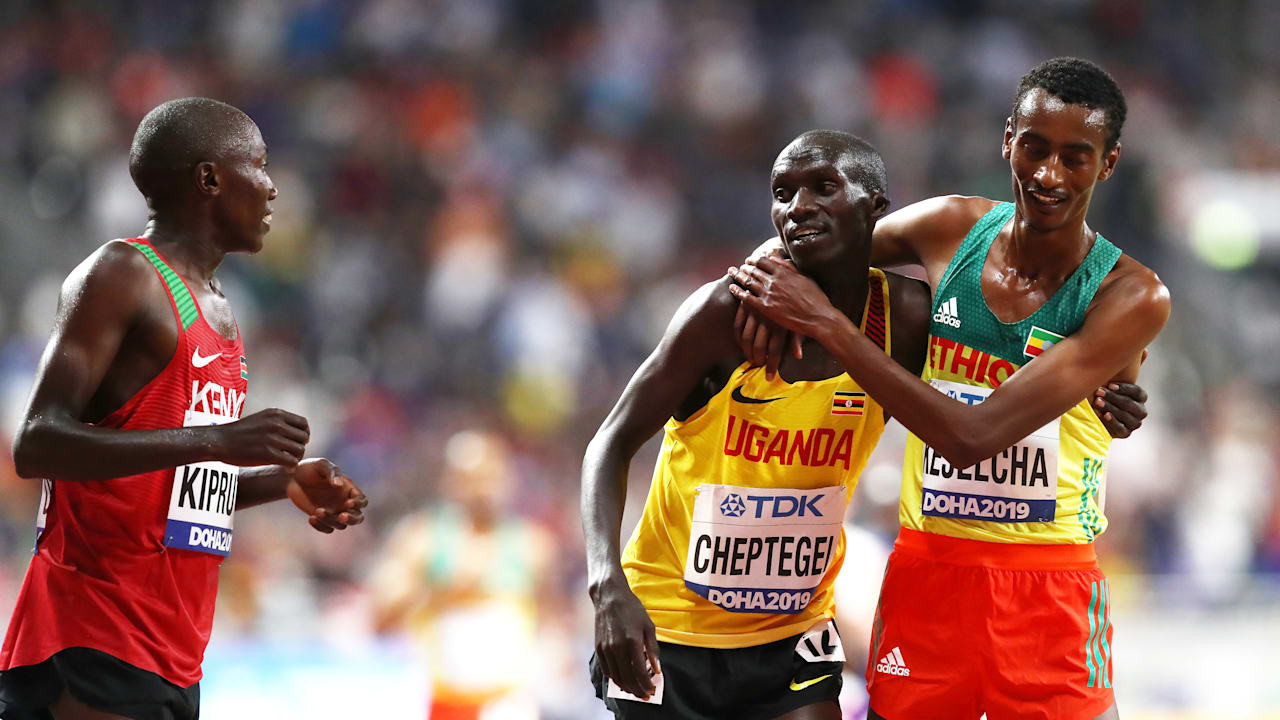
"It would be really amazing to win the double, but if I win gold in the 10,000m I would still be grateful," Cheptegei added.
Uganda have won only two Olympic gold medals in their history, with John Akii-Bua winning the 400m hurdles in 1972 and Stephen Kiprotich winning the marathon 40 years later in London.
Cheptegei wears Nike's ZoomX Dragonfly spikes, which transplant the sportswear giant's controversial combination of highly resilient foam and carbon plates to the track.
However Cheptegei believes that, with the same technology available to all athletes if they want it, he doesn't have any unfair advantage.
"The shoes really do help," he said.
"But in this case the shoes are not only available to Mr Cheptegei.
"They are available for everyone who wants to attack the world record.
"You have seen the likes of Yomif Kejelcha, Selemon Barega...it is not about shoes only, but athletes having this period concentrating more on training and not traveling.
"I was focused on just this one thing. And that was breaking the world record."
(12/29/20) Views: 60BBC Athletics
A few important notes for any new runners out there training through the winter for the first time
Running in the winter is much different than running in the summer. In the summer, it’s a carefree activity and it’s not too hard to convince yourself to get out the door. In the winter, though, you have to plan for the cold and the dark, and you might find yourself struggling to find motivation.
Running through the months of November to March can be difficult enough, so here are a few tips to make training easier this winter for any new runners out there.
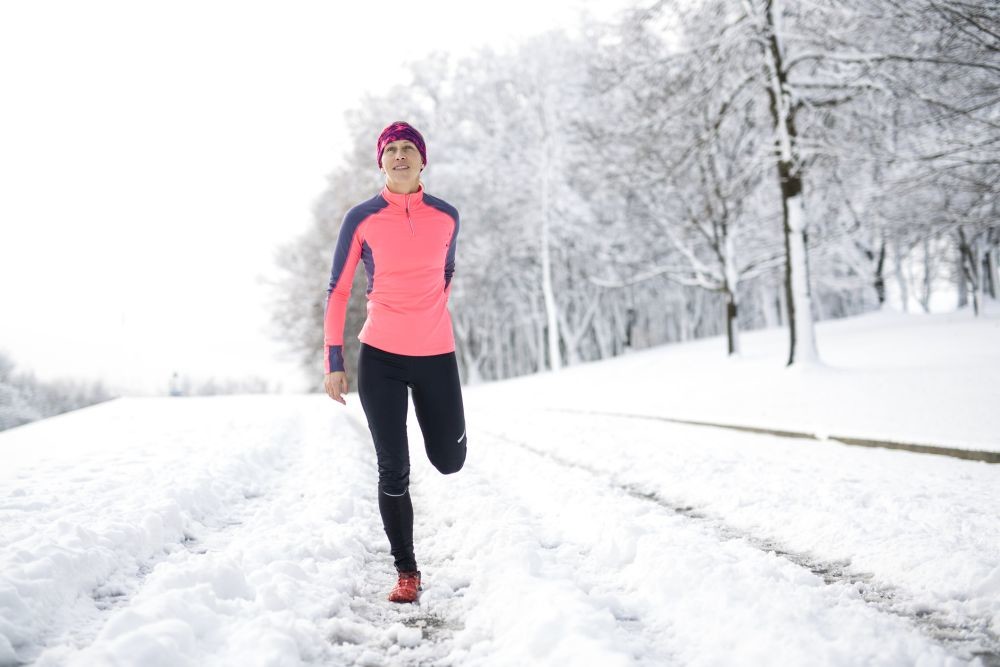
Star of easy:

Warming up is always important, but especially so in the winter. Even if you aren’t planning on going out for a fast or hard run, you should take it extra easy for the first five or 10 minutes of your session. Once your body warms up, you can pick up the pace.
Check the weather:
Winter sometimes is unpredictable. One day it can be 5 C and the next it can be -10 C. Unlike in the summer, when you can pretty much always get away with wearing the same type of outfit, in the winter, you need a running gear lineup. Some runs all you’ll need is a shirt or two, leggings, your hat and gloves, but on other runs it’ll be necessary to throw on a sweater, a jacket, a buff and maybe even more. Before every run this winter, take a look at the weather forecast so you can dress accordingly.
Leave things behind:
It’s better to wear too many layers rather than too few. You might start a run all bundled up, but as you get moving, you might start to get too hot. If this happens to you, don’t be afraid to leave things behind and go back to pick them up later. Tie your jacket or sweater to a signpost or tree, make sure you know exactly where it is and keep running. This tip probably isn’t the best for city runners, but anyone in smaller towns can probably get away with it without worrying that their gear will get taken.
Don´t trust the snow:
Be careful when you run on potentially slippery roads. Even if the snow on the ground looks like it’s packed down well, it can be slippery. Sometimes only a small dusting of snow covers the ice, and if you step on that, you’ll end up on the ground. It’s especially important to take it easy around corners. It’s OK to run fast in the winter, but make sure you focus on where you’re stepping so you can be as safe as possible every run.
Running the day if possible:
potentially slippery roads. Even if the snow on the ground looks like it’s packed down well, it can be slippery. Sometimes only a small dusting of snow covers the ice, and if you step on that, you’ll end up on the ground. It’s especially important to take it easy around corners. It’s OK to run fast in the winter, but make sure you focus on where you’re stepping so you can be as safe as possible every run.
Try out a race:
This winter you won’t be able to find an in-person race, but that doesn’t mean you can’t jump into virtual events. A lot of people reserve races for the spring, summer and fall, but why deprive yourself of competition for an entire third of every year? Do yourself a favour and enter some virtual races this winter. It’ll help motivate you in training and add some fun to your schedule.
(12/28/20) Views: 57Ben Snider-McGrath
Lake Biwa Marathon to be Subsumed Into Osaka Marathon beginning in 2022
On Dec. 25 it was learned that the longest-running marathon in Japan, the Lake Biwa Mainichi Marathon, will become a part of the Osaka Marathon beginning in 2022.
Following Lake Biwa's 76th edition on Feb. 28, 2021, it will next take place under the tentative title of the 10th Osaka Marathon and 77th Lake Biwa Mainichi Marathon Combined Competition.
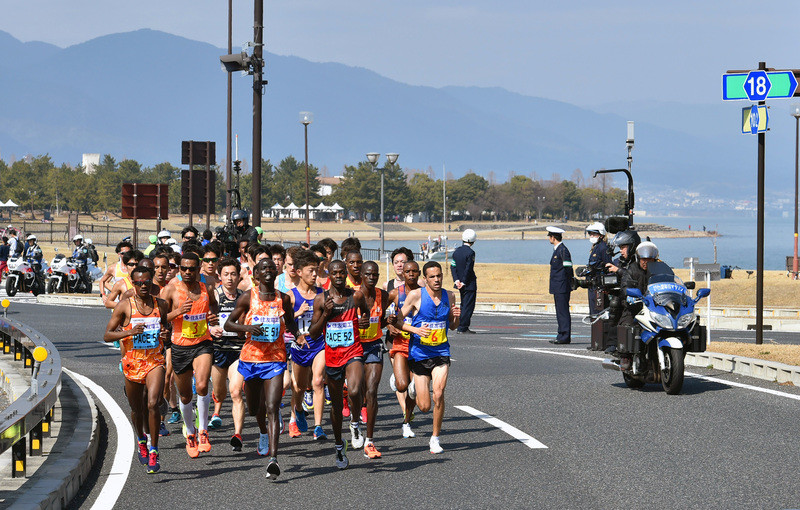
The Osaka Marathon executive committee finalized the plan at a meeting in Osaka on Dec. 25. Plans call for the 2022 race to take place on Feb. 27 utilizing the existing Osaka course.
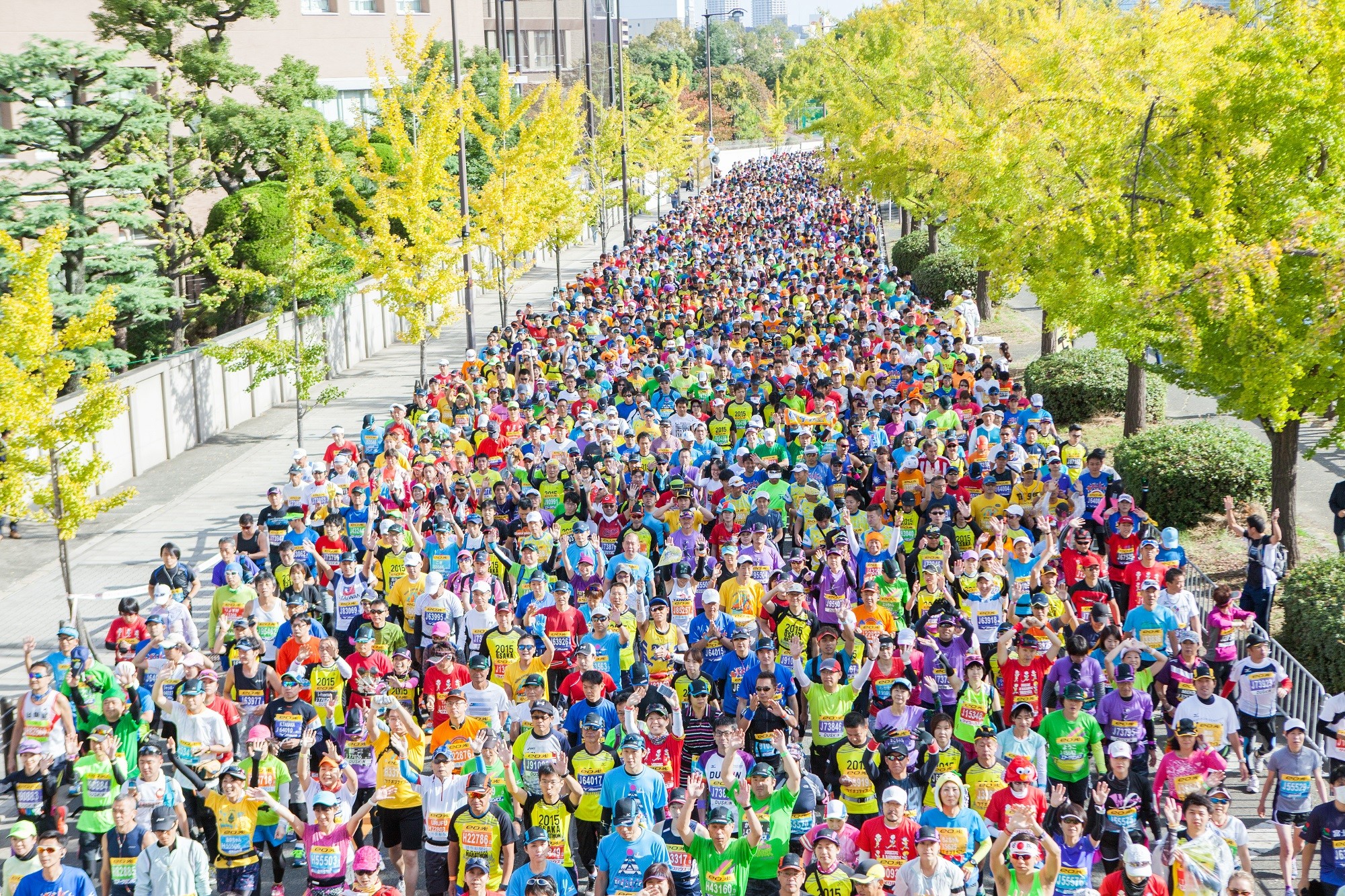
With an eye toward World Athletics' preference for large-scale races that combine elite and mass participation marathons, the plan will combine Lake Biwa's history of attracting top-level international and domestic athletes with Osaka's status as the second-largest mass-participation marathon behind only the Tokyo Marathon.
Organizers are aiming to go one level higher than Lake Biwa's current World Athletics ranking of gold to achieve the top-level platinum ranking, and hope that the arrival of such a prestigious event will help pave the way for success for the Kansai region at the 2025 Osaka World Expo.
Lake Biwa's first edition in 1946 was held in Osaka, moving to its current location in 1962. Its lakeside course has welcomed countless famous athletes and helped produced a large number of Olympic and World Championships team members.
The Osaka Marathon began in 2011. Starting in front of the Osaka Government Offices, its course passes many of Osaka's most popular tourist sites before finishing at Osaka Castle Park.
Its 10th running in late November this year was cancelled due to the coronavirus crisis, but it had attracted a field of 35,000 entrants.
(12/28/20) Views: 54Brett Larner
Britain’s triathlete Tom Bishop gearing up for Tokyo 2021 challenge
At 29, Derby’s Tom Bishop is one of Britain’s leading triathletes and has his best chance yet to take part in the Olympics when, hopefully, they go ahead in Tokyo next year. Here, Bishop tells the story of his early career and preparations for Tokyo.
I grew up with my twin brother, David, on a cul-de-sac in Mackworth. We moved to Allestree and Woodlands Community School, as it was called then, was where my triathlon career really began.
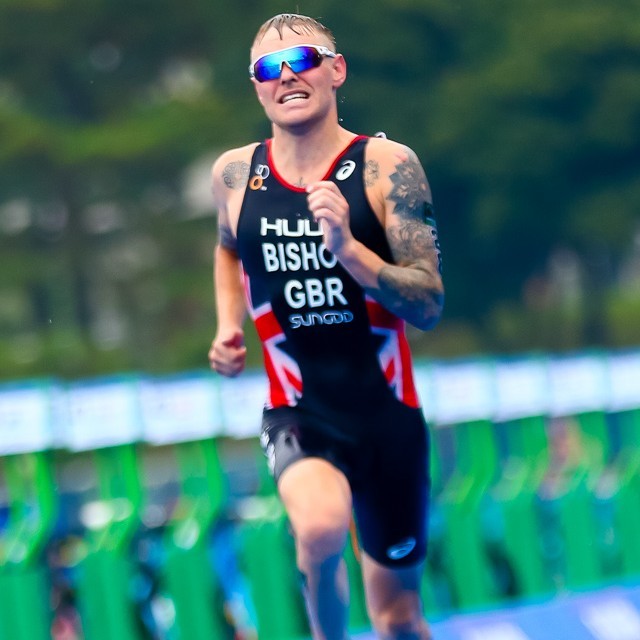
As kids, we never took sport too seriously. Rather, we just did it and enjoyed ourselves. But there came a point when a decision had to be made about our dedication and commitment to triathlon and this choice came when we were 16.
You could say it was a coming of age moment and a few sacrifices had to be made. Growing up, we had joined numerous sports clubs, including school football and cricket teams, but these had to end.
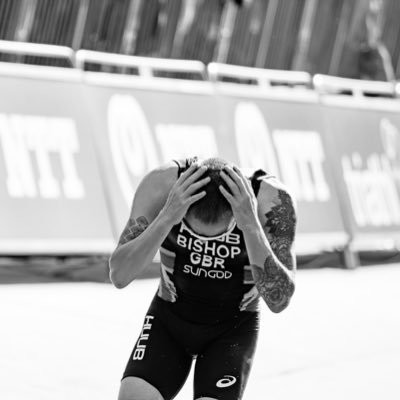
We were also members of City of Derby Swimming Club and Derby Athletics Club and they were fundamental in developing our triathlon skill set.
As sixth formers, we had a bit more time in the week to train and began to get access to the British Triathlon Team in Loughborough, with early morning sessions three times a week before school and a general increase in training hours, eight to 18 hours. We also started to cycle with the local group De Uno, adding sessions at lunchtime and after school, too.
The load was tough to balance around A-level studies but we both achieved some solid grades earned spots at university, myself at Leeds and David at Loughborough.
Our A-level years saw us develop into the best junior triathletes in the country, winning multiple medals, and I even represented Great Britain at youth and junior age groups. I said it was tough but we loved every minute, pushing each other to be the best we could.
At the end of my first year, I came second at the junior World Championships and the following two years I came third twice at under-23 level. By the time I graduated, I had won three world medals as a junior and under-23 and turned pro, racing full-time for the GB squad.
Looking forward to next year, Tokyo is the big focus. The first few months will see me racing to gain qualification points, hopefully starting in Abu Dhabi on first weekend in March, though it is yet to be scheduled.
The next block of racing will take me to Asia, with a race in Chengdu, then Osaka and one of the Olympic selection races in Yokohama, Japan. Simply, I need to be at my best and battling for podiums if I want to score enough points to hit the British Team’s selection criteria.
It’s going to be challenging but I’m up for it. Obviously, there’s still huge uncertainty about what the year will look like but I have learned a lot this year about how to deal with these times.
(12/29/20) Views: 53Colston Crawford
After Overcoming Drug and Alcohol Addiction, He Ran Off 216 Pounds in Two Years
“I used to assume that I’d be that fat guy forever—but my life is just starting.”
Before I started my weight-loss journey, I struggled with drug and alcohol addiction. But after I stopped doing drugs, the weight piled on. The drinking continued, and instead of drugs, I turned to food.

I fell into a vicious cycle of drinking and eating, and the bigger I got, the more depressed I felt. At my heaviest at 28 years old, I weighed 446 pounds. I was experiencing heart palpitations and sleep apnea because of the weight. My wake-up call was when I realized I had to hold my breath to bend down to tie my shoes.
I wanted a better life. I knew it would take time, but I needed to heal from my addiction and unhealthy habits. Finally, in my 30s, I became sober from drugs and alcohol. But I remember looking at my son and thinking becoming sober wasn’t enough—I wanted to create a healthier example for him. I was wearing a size 54 pant and a size 5X shirt. I felt like I wasted so much of my life—all my 20s—to the party scene. And if I didn’t change anything, I may not even make it past my 30s.
In 2018, I joined a CrossFit-style gym, and I had to run during the workouts. I remember running 100 meters, and thinking that I was going to die. I thought, This is crazy. I’ll never be able to run with my son.
At the time my son was running cross country at school and in local 5K fun runs. He asked me to run one with him, and I was so overwhelmed because I had just started running. But it motivated me to keep up with my workouts—and I made some serious dietary changes. When I was at my heaviest, I ate any food that crossed my path. I switched to eating an organic, plant-based diet whenever possible, and the weight started falling off. I lost 170 pounds and started running more.
I was honestly winging it when I started. A nice employee at my local running store gave me some good advice on training plans. Between that and watching some YouTube videos, I just listened to my body and mixed in sprints, calisthenics, and long runs. I began running 5Ks and 10Ks.
It wasn’t until 2020 that I really took running seriously. I had finally gotten comfortable lifting weights and doing group workouts when COVID-19 forced gyms to close. Not wanting to lose my results, I started running more.
I now run six days a week and have two strength-training sessions a week. I don’t follow a strict training plan but have slowly upped my mileage—I recently completed a 30-mile and a 40-mile training run. In November I did a virtual 100-mile challenge called the Corona Lisa 100 Mile Challenge, and I plan to run my first official marathon, the Clearwater Marathon, in January 2021.
In two years, I have lost 216 pounds. I’m hungry to show people that anything is possible, no matter how young or old you are, what your background is, or where you’ve come from. I’m hungry to push myself as far as I possibly can encourage others to change for the better.
Not only has running made me healthier physically, it has also been a mental and spiritual outlet for me as well. I run by myself with no headphones, and it gives me time to think, pray, and observe the world around me.
Running is something more than just running to me now. It’s time for me to just feel myself moving and to remember how hard it was just to walk down the street before. It reminds me how I used to be chained down with my addiction to drugs and alcohol. Running is more than just moving your feet— it’s a feeling of freedom with every mile I go.
The work isn’t over yet either. There is still a hunger. Currently, I’m hoping to do an in-person 100-mile race in 2021 at the age of 41. Plus, I want to lose another 30 pounds to reach my goal weight of 200. 
​
I wish everyone could feel the happiness that I feel while I’m running. I can appreciate the body I have. Even though I sometimes get overwhelmed by seeing my loose skin shake as I run, it makes me think how much I’ve changed from my past.
Running has brought so much happiness to myself and to my family. I used to assume that I’d be that fat guy forever—but my life is just starting. If I can encourage just one person by sharing my journey, then it’s all worth it. If you’re feeling discouraged about your weight, figure out what’s holding you up mentally, and eventually it will happen.

(12/27/20) Views: 52Runners World
What happened when the Tarahumaras' love of ultrarunning went global?
The book Born to Run brought attention to an indigenous Mexican’s people feats of long-distance running. A new documentary looks at what happened next
Next up in ESPN’s venerable 30 for 30 series is The Infinite Race, a documentary on a sports topic that hardly checks the biggest 30 for 30 box, in that the film does not involve a famous star athlete, sport or event. In fact, The Infinite Race kicks off with a simple story about an indigenous people’s joy of long-distance running.
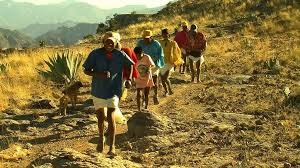
The documentary explores what happens to these people, the Tarahumara, who live deep in the mountains of Chihuahua, Mexico, when their love of running, or even their calling to run, spills out to the rest of the world because of a popular book about running and an American known as Caballo Blanco, or the White Horse.
“It’s a story about resilience, survival and continuance,” Bernardo Ruiz, the veteran Mexican and American film-maker who directed The Infinite Race, tells the Guardian.
That the 50-mile Ultra Maratón Caballo Blanco, which The Infinite Race revolves around, will be held again next March in the rugged terrain of Chihuahua’s Copper Canyon is a testament to the event’s durability. Running won out, as it has for generations among the Tarahumara, but only after the event survived a culture clash that involved a lot of dollars and pesos, good and bad.
Although he directed an award-winning 2008 documentary about baseball star Roberto Clemente and says he always wanted to make a film about running, Ruiz deals with tougher subjects, like the US-Mexico drug war in his 2016 documentary Kingdom of Shadows.
He says of The Infinite Race: “I liked how it was a compelling, beautiful film about running, but it also talked about social issues.”
The film, which debuts on 15 December, starts a little slowly, but those who stick with it will find out much about an indigenous people’s rich past – and a future lighted by hope.
The Tarahumara, or the Rarámuri, have run vast distances for years, often wearing sandals that have tire treads as soles. They say running is in their blood: isolation and geography helped them build endurance to hunt prey. They became famous after they were featured in Born to Run, a 2009 bestseller by Christopher McDougall.
The central figure of Born to Run was American ultramarathon runner Micah True, also known as Caballo Blanco, who organized a race in 2003 that would eventually become the Ultra Maratón Caballo Blanco. True hoped the race would help the Tarahumara preserve their running heritage and, more significantly, their culture, which had been battered by hunger, a lack of drinking water, a shortage of housing and global heating.
True, who had wintered in the area for 10 years, offered prizes of cash and corn, a commodity: “I don’t want to see people kill themselves for corn,” he said in the documentary. He opened the event to ultramarathoners, and it became popular among Americans, who were looking for a new challenge and a new culture to explore.
True died in 2012 at the age of 58 of a heart attack while running, but the event named after him continued to grow. A shorter kids’ run for “Caballitos” was offered, with bags of school supplies given to participants. The event had become commercialized, even with its own line of merchandise, but the whole region benefited from Caballo Blanco’s idea.
But the region’s seclusion had also become attractive to criminal gangs, who took over farms to grow marijuana and poppy plants to smuggle into the United States, whose border is only about 550 miles to the north. People needed work, and the drug trade provided opportunities, with even distance runners hauling drugs. Gangs proliferated. So did violence.
“Many families were forced out of their communities because of the violence,” Irma Chávez, an activist, explains in the film. “Unfortunately, you have to run away before they kill you.”
The 2015 Ultra Maratón Caballo Blanco was supposed to be the biggest yet, but gangs all but took over the town, clouding the event with the real threat of violence. The Americans who helped organize the race, believing participants could be in danger, decided almost at the last minute to call off the official race. No vouchers for corn would be issued to participants.
“They kind of intruded with a heavy hand into a runner’s paradise,” Ruiz says of the gangs.
He says, “It’s been my view that the race organizers were stuck in kind of an impossible situation.”
And that might have been the end of the event. But a group of Tarahumara assembled on what was supposed to be the morning of the race – and ran the course anyway, without incident. The marathon was officially back in 2017. Miguel Lara Viniegras won the 2020 race, which attracted 220 runners last March, in six hours 43 minutes.
As an ultrarunner and photographer Luis Escobar says in the film, “People are looking for something big, outside of their office, outside of their home. It is a big struggle, it’s hard physically and mentally – and there’s nothing like doing it. When you complete it, you know that you can do anything.”
Ruiz, who says he spent most of his career examining the love-hate relationship between the United States and Mexico, had a compelling challenge: telling a story that was not that well-known and based in a place that was very difficult to get to from the outside world. “You’d have to kind of be an ultrarunner or a sports geek to care about it,” he says.
Perhaps the film won’t draw as big an audience as other ESPN documentaries because it does not include an American sports celebrity like OJ Simpson or Michael Jordan. But the 30 for 30 project, now more than a decade old, has become much deeper, delivering quality projects that are way more than mere sports movies. This is one.
As Ruiz says, 30 for 30 “is a franchise that is really film-maker-driven.”
(12/27/20) Views: 50Russia’s leading track and field athletes to compete at Olympics in Japan
Russia’s leading track and field athletes will have an opportunity of going next year at the Olympic Games in Japan next year, Russian Sports Minister Oleg Matytsin said on Thursday speaking at the Sport Forum Live event in Moscow.
"If we speak about the track and field athletics, I must say that our relations with World Athletics entered a constructive stage of relations," Matytsin said.
"We have accepted our mistakes from the past, elected the new leadership of the All-Russia Athletics Federation [RusAF] and are now actively cooperating about its membership reinstatement," the Russian sports minister said.
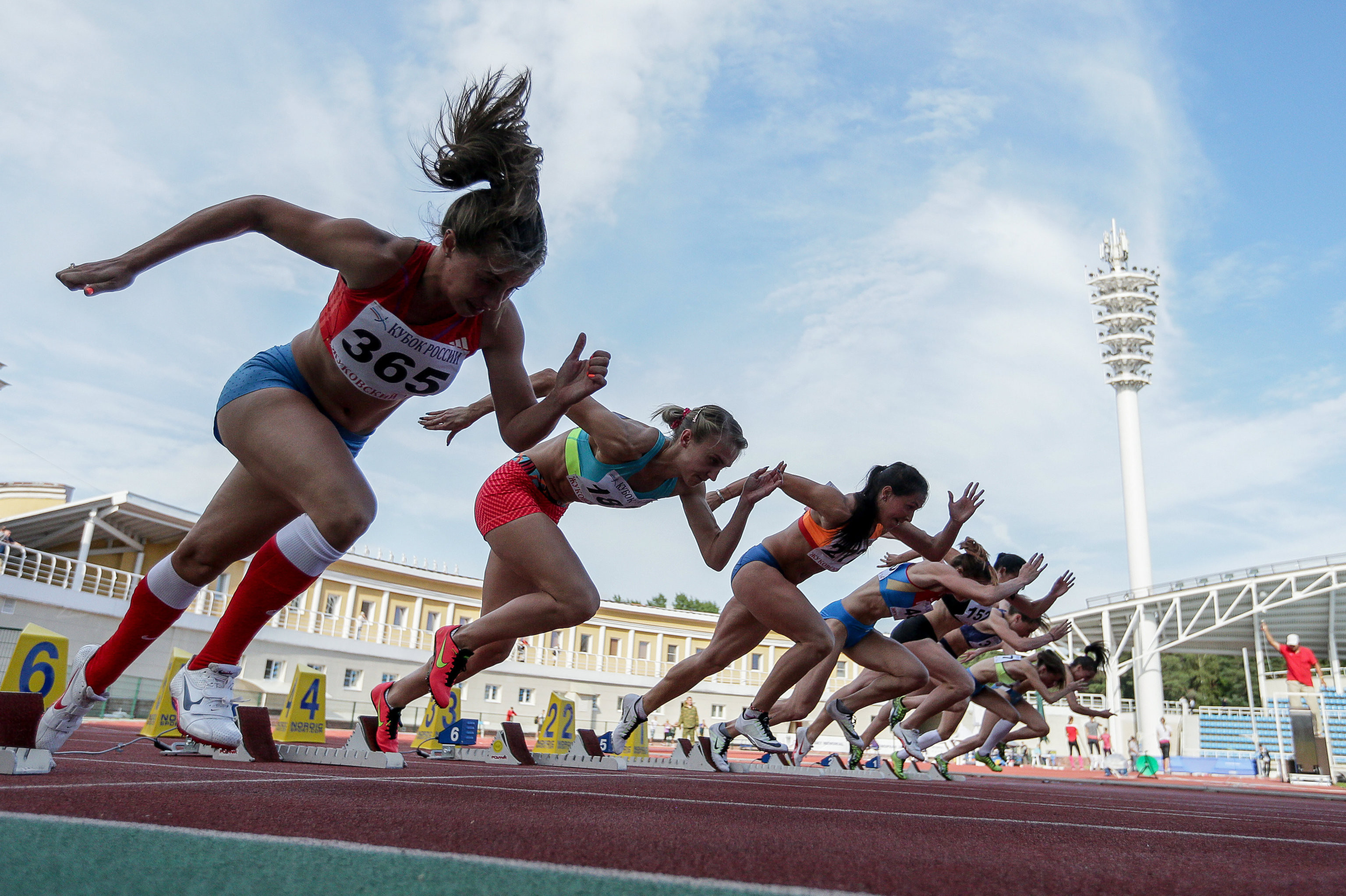
"I am positive that our leading athletes of track and field athletics will be cleared to perform at the upcoming international tournaments, including at the next Olympic Games," Matytsin added.
World Athletics, suspended RusAF’s membership in November 2015, following a wave of anti-doping rules violations and formed a special mission on the issue.
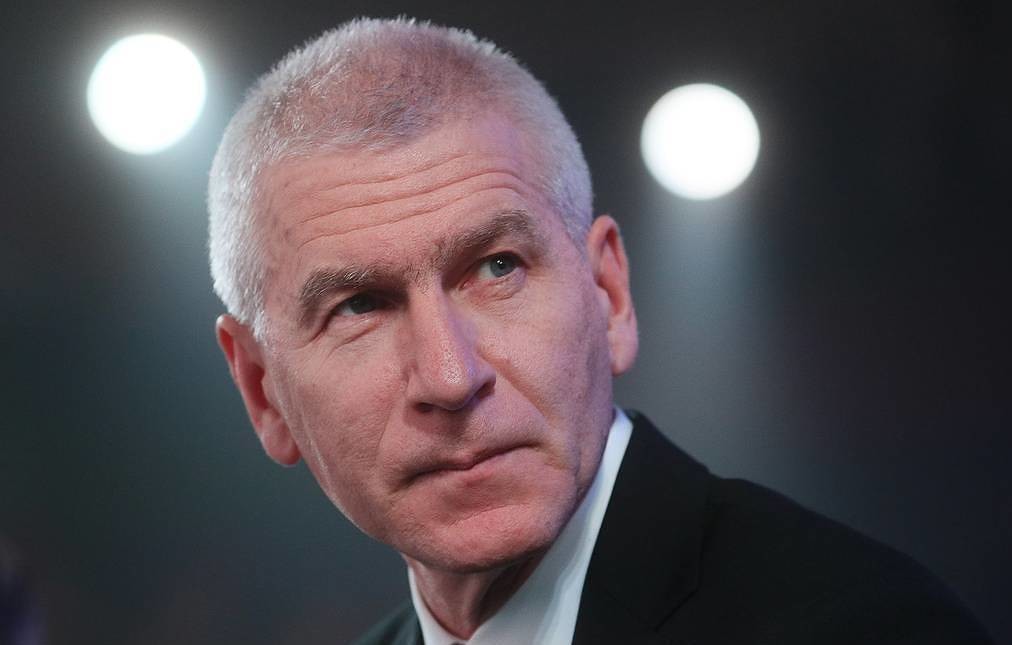
World Athletics, however, allowed clean athletes from Russia to participate in international tournaments under the neutral status or the Authorized Neutral Athlete (ANA) until the membership of the RusAF is reinstated. The ANA status prohibits Russian athletes from participating in all international track and field tournaments under the national flag.
The suspension of Russia’s governing athletics body has been ruled to remain in force 15 times since its introduction in 2015.
The Russian sports minister also said that depriving Russia of the right to fly the colors of the national flag was a "dear price to be paid."
The Court of Arbitration for Sport (CAS) ruled on the night of December 17 to keep in force a number of sanctions against Russia for the period of up to two years. The decision of the Swiss-based court was made within the frames of a legal spat between RUSADA (the Russian Anti-Doping Agency) and WADA (the World Anti-Doping Agency).
According to the CAS decision last week, Russian athletes were deprived of their right to participate in all World Championships, Olympic and Paralympic Games under the national flag of Russia for the two-year period.
The national anthem of Russia was also ruled out to be played at international sport tournaments in the course of the next two years, including at the upcoming Olympic Games in Japan next year.
"It is a dear price that we must pay for the dark period if we speak about the national flag and anthem," Matytsin said. "I’m sure that this situation will bring us closer and unite us."
"However, taking into account all mistakes from the past, I would prefer to set my aim for the future," he continued. "The most important is to cultivate a respect for each other and to keep an attitude of intolerance regarding the use of doping in sports."
The IOC (the International Olympic Committee) and the IPC (the International Paralympic Committee) announced on March 24 a decision to postpone for one year the Olympic and Paralympic tournaments in Japan due to the continuous COVID-19 spread.
(12/26/20) Views: 50Russian News Agency


